Key takeaways:
- Selective mutism is often misunderstood, leading to stigma; fostering awareness and empathy can empower affected individuals.
- Building trust with those experiencing selective mutism requires patience, vulnerability, and creating safe communication spaces.
- Personal experiences and active listening can significantly enhance connections and trust among individuals with communication challenges.
- Honesty and shared vulnerabilities promote deeper understanding and stronger bonds in relationships affected by selective mutism.

Understanding Selective Mutism Awareness
Selective mutism is often misunderstood, leading to mislabeling of affected individuals as shy or standoffish. I recall a time when I spoke with a teacher whose student demonstrated selective mutism; she shared her frustration about his silence in class, completely unaware of the emotional storm he was navigating. Have you ever considered how paralyzing it must be to feel the urge to speak yet be unable to do so, trapped in a state of anxiety?
Understanding selective mutism is about acknowledging the struggle beyond the silence. I remember my friend, who experienced this challenge, often communicating through gestures and notes. Her frustration was palpable—not because she didn’t want to speak, but because the words just wouldn’t flow, leading to feelings of isolation. This connection can be transformative; if we listen with empathy and give space, we align not only with their struggle but also empower their journey towards expression.
Awareness is the first step in dismantling the stigma surrounding selective mutism. Have you noticed how conversations can shift when we become educated about a condition? Personally, discussing this with friends opened their eyes and hearts, allowing for more support and understanding. When we foster awareness, we create a community that embraces those affected by selective mutism, validating their experiences and encouraging their voices to be heard.
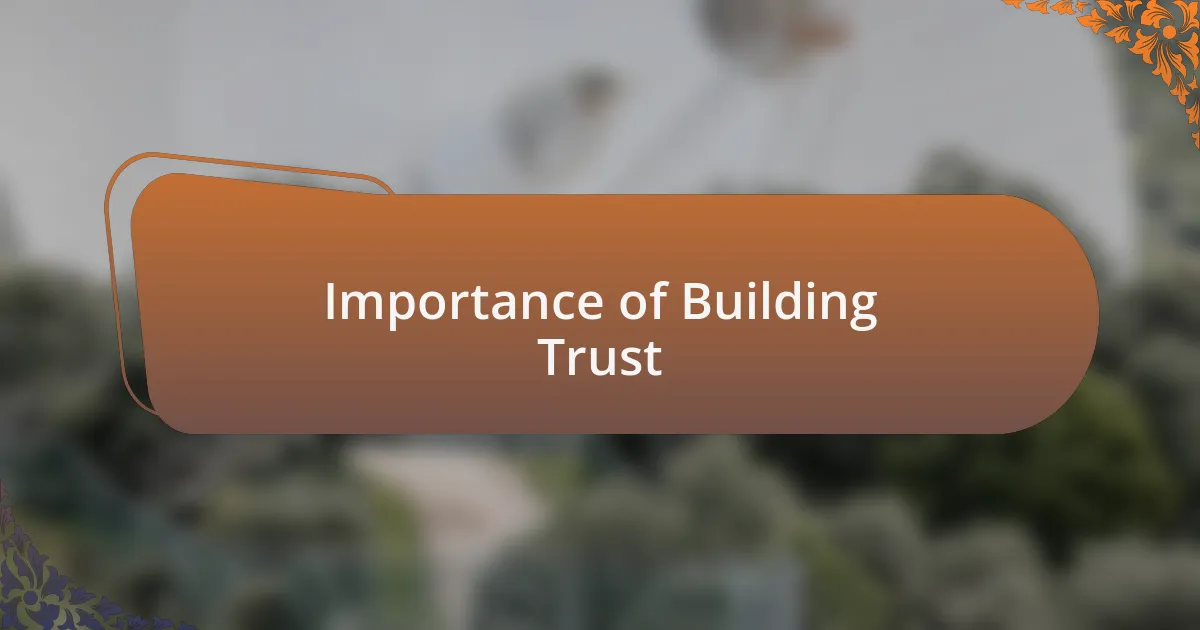
Importance of Building Trust
Building trust is essential when supporting someone with selective mutism. I still remember trying to connect with a child in my neighborhood who rarely spoke in public. It took time and patience, but when I focused on creating a safe space—sharing stories of my own struggles—his guarded demeanor began to thaw. Have you ever noticed how simply being vulnerable encourages others to lower their walls?
The relationship between trust and openness is profound. I once met a young girl who only felt comfortable speaking when she was surrounded by family. I knew she needed that familiarity and safety to express herself. By ensuring she felt accepted, I witnessed how her words started to flow during our playtime, illustrating that trust is the gateway to voice and expression.
Trust also fosters resilience. When I reflect on moments of hesitation in my own life, I understand how vital support is in overcoming challenges. A simple nod of encouragement can ignite confidence in those battling silence. Can you imagine the power of reassurance? It’s an unspoken bond that eases their journey, reminding them they are not alone as they navigate their world.
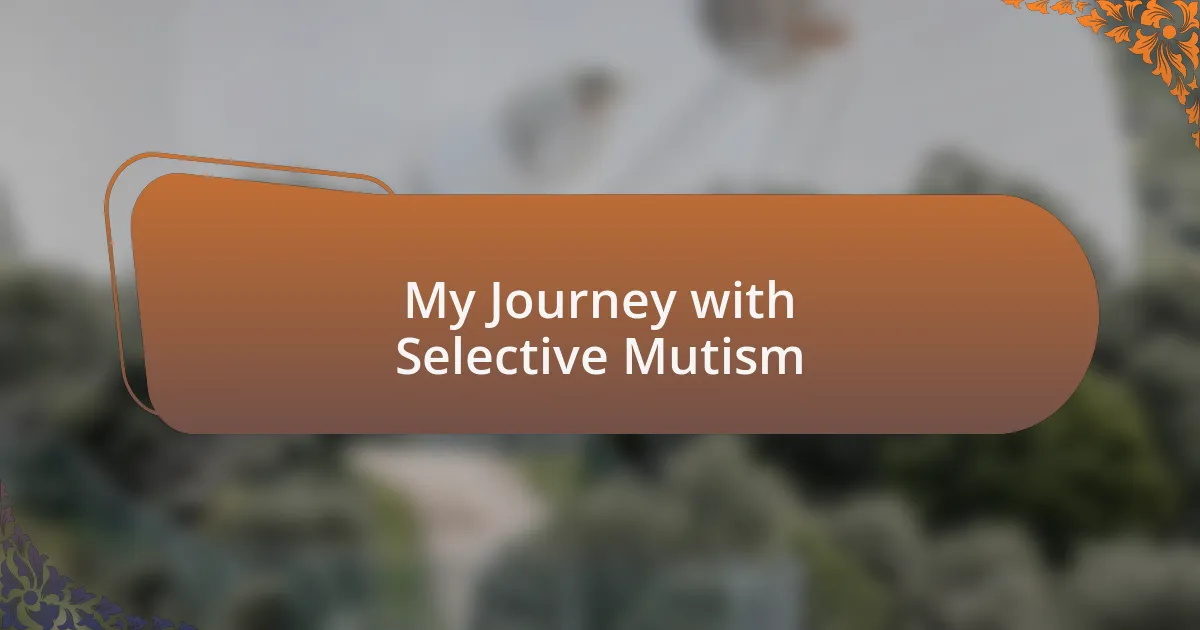
My Journey with Selective Mutism
As I look back on my journey with selective mutism, I realize how deeply intertwined it was with my emotional landscape. I remember sitting in my classroom, feeling the weight of unspoken words while my peers engaged in lively chatter. It was as if there was an invisible barrier that separated me from joining in. Have you ever felt that urge to speak, only to find a tight knot in your throat? Navigating those moments was challenging and isolating.
One particular afternoon stays vividly etched in my mind. I was part of a group project, and my voice barely made it to the surface. The teacher, noticing my struggle, approached me after class. Her gentle encouragement and patience illuminated a path I hadn’t noticed before. I discovered that when someone believes in you, it creates a bridge over the fear, allowing me to peek into my own potential.
In hindsight, I recognize that each step in my journey came with small victories. Even speaking up during casual conversations with friends felt monumental. I often reflected on how those moments of vulnerability transformed my relationships and built connections. Have you experienced that thrilling blend of fear and excitement when you finally find your voice? It’s a testament to the power of trust in overcoming the silence that often comes with selective mutism.
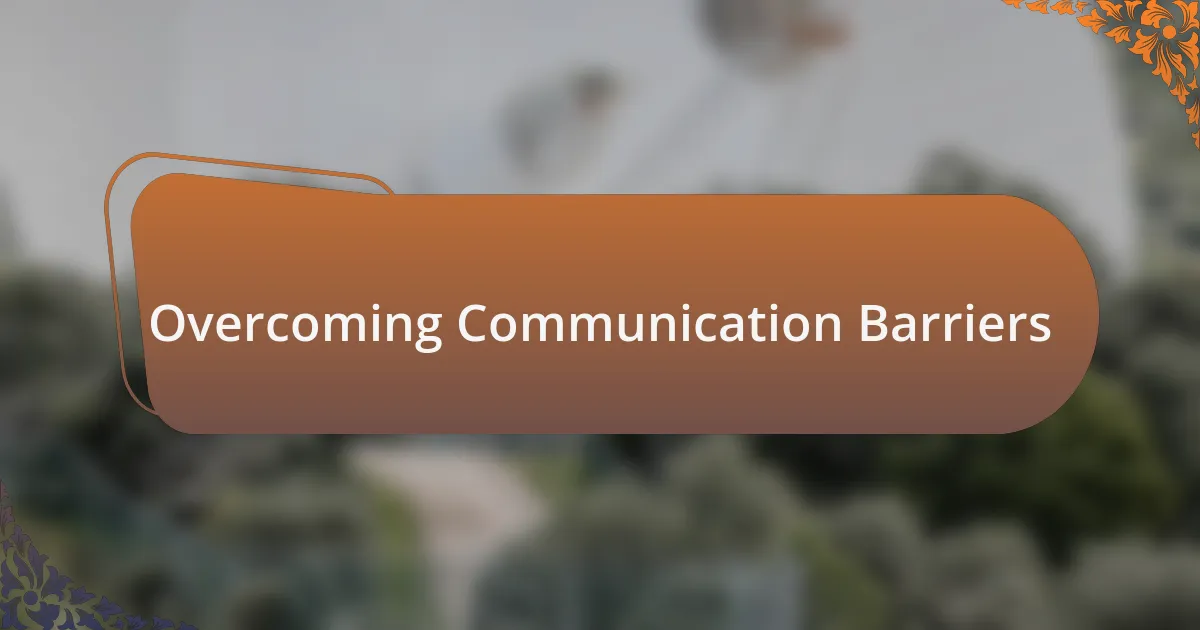
Overcoming Communication Barriers
Feeling isolated in social settings can be daunting, especially when you yearn to express yourself but feel trapped by silence. I remember attending a family gathering where everyone was sharing stories and laughter while I stood on the periphery, merely a spectator. It was a harsh reminder of how communication barriers can create chasms in your relationships. Have you ever felt the stinging frustration of wanting to join in but remaining on the sidelines?
In my journey, I learned that overcoming these barriers often began with a single step. One day, I decided to write down my thoughts before speaking them aloud. It may seem simple, but jotting down what I wanted to share eased my anxiety. Each time I read my notes to a trusted friend, I felt a small piece of my fear dissipate. By putting my thoughts into written words first, I could develop the confidence to express them verbally. Does it surprise you how a change in approach can transform your experience?
Additionally, I found that creating a safe space for communication was vital. I started seeking out environments where I felt comfortable, such as small coffee shop gatherings with close friends. The relaxed atmosphere allowed me to practice communicating without the pressure of a large audience. I often wonder if that’s why safe spaces are so important – they not only reduce anxiety but also encourage authentic connection. Have you ever noticed how your surroundings can impact your ability to communicate?
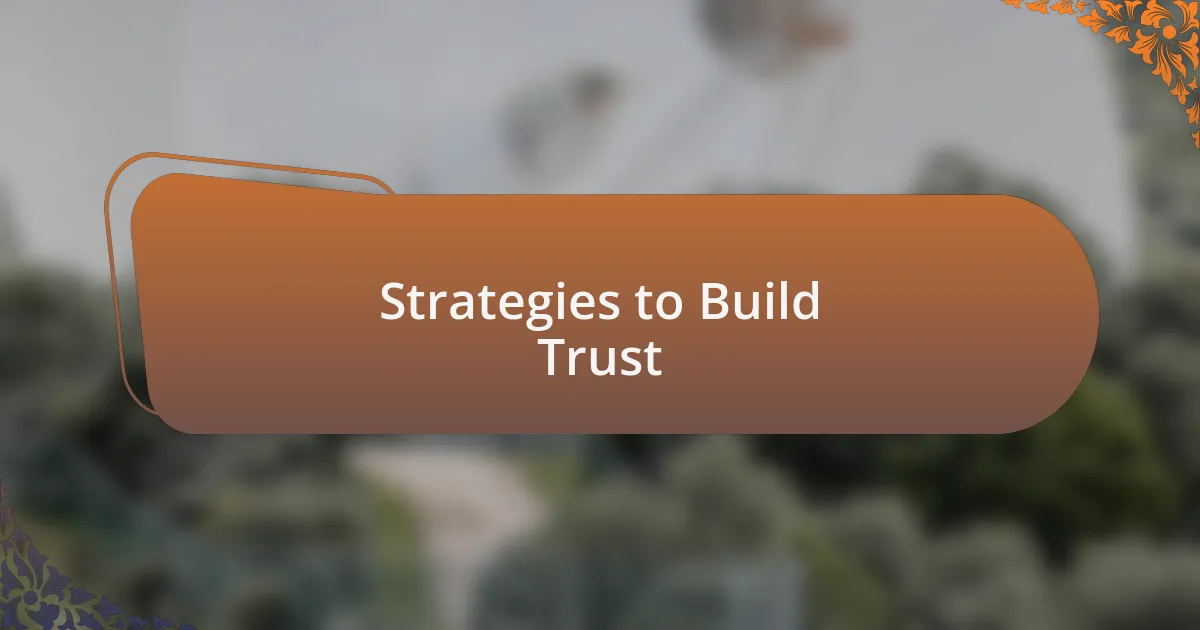
Strategies to Build Trust
Building trust takes patience and intentionality. In my experience, one effective strategy is practicing active listening. I recall a time when a friend shared their struggles with selective mutism, and instead of immediately responding with advice, I focused solely on understanding their feelings. This not only reassured them, but it also solidified our bond. Have you ever noticed how giving someone your undivided attention can change the dynamics of a conversation?
Another strategy that proved beneficial was consistency in interactions. For instance, I made it a point to check in regularly with a classmate who often felt overwhelmed in social settings. Each time I reached out, I could see the relief in their eyes. They learned to trust that I would be there for them. How often do you take the time to show someone that they can count on you?
Finally, sharing personal experiences can really foster a sense of connection. When I opened up about my own challenges with communication, it seemed to encourage others to share as well. I vividly remember the moment a fellow participant in a support group shared their fear after I revealed mine. That mutual vulnerability allowed us to establish a deeper level of trust. Isn’t it interesting how our stories, when shared openly, can create an invisible thread of trust between us?
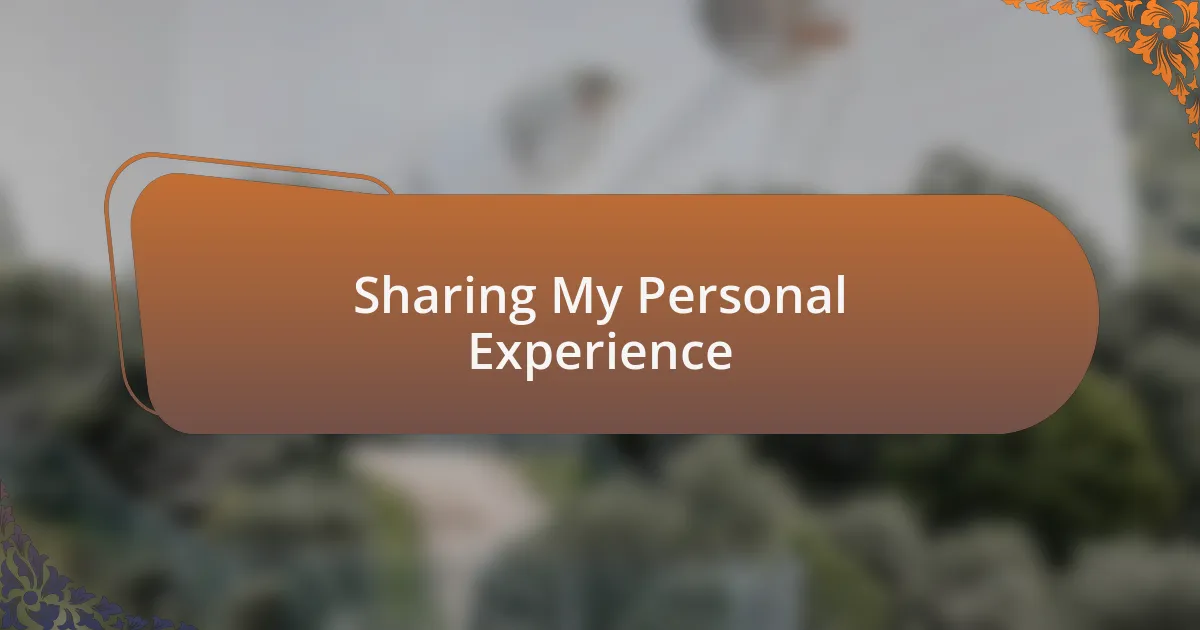
Sharing My Personal Experience
One pivotal moment in my journey with trust was when I volunteered at a local community center. A young girl, visibly anxious and withdrawn, reminded me of my own struggles with communication. As I sat beside her, sharing my story about feeling invisible in large groups, I could see her walls begin to crumble. What would happen if we all took a moment to share our vulnerabilities instead of hiding them?
Another memorable experience happened during a group discussion on selective mutism. I bravely shared a time when my silence spoke louder than words during a crucial moment. The room held its breath, and to my surprise, others began to share their similar experiences. It made me think: could our shared struggles be the foundation for building lasting trust among us?
Finally, reflecting on moments of connection, I recall a time when a peer reached out after I shared a particularly vulnerable experience. They simply said, “Thank you for being honest.” This small acknowledgment felt monumental. Have you ever realized how simple expressions of gratitude can reinforce trust and open the door for deeper connections?

Lessons Learned from My Journey
Trust, I’ve learned, often begins with vulnerability. There was a day during a support workshop when I felt compelled to share a fear that had haunted me for years. As I spoke the words “I’m afraid of being judged,” I could feel the anxiety lift, not only from myself but from others in the room. Have you ever noticed how honesty can create an unspoken bond among those who resonate with your feelings?
Another significant lesson came when I engaged in a one-on-one conversation with a friend who also experienced selective mutism. During that chat, I disclosed how my silence often stemmed from fear, not apathy. The moment I revealed this, her eyes mirrored my own past, and a profound understanding settled between us. It was a potent reminder: sometimes, revealing our fears cultivates the very trust we seek.
Moreover, I discovered that trust flourishes when we actively listen. I remember a time when a friend reached out to me, and instead of rushing to offer advice, I simply listened. She spoke of her challenges and felt heard for the first time. How often do we wait to speak rather than listen? That moment solidified for me that being present is just as vital as sharing—it’s a two-way street in building trust.